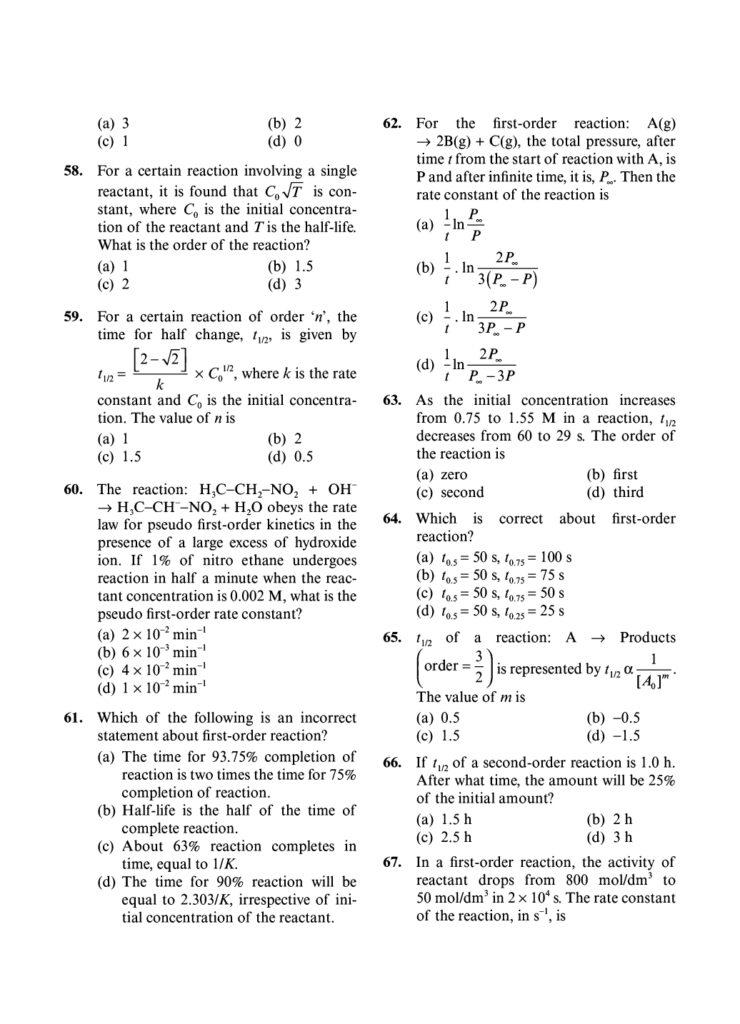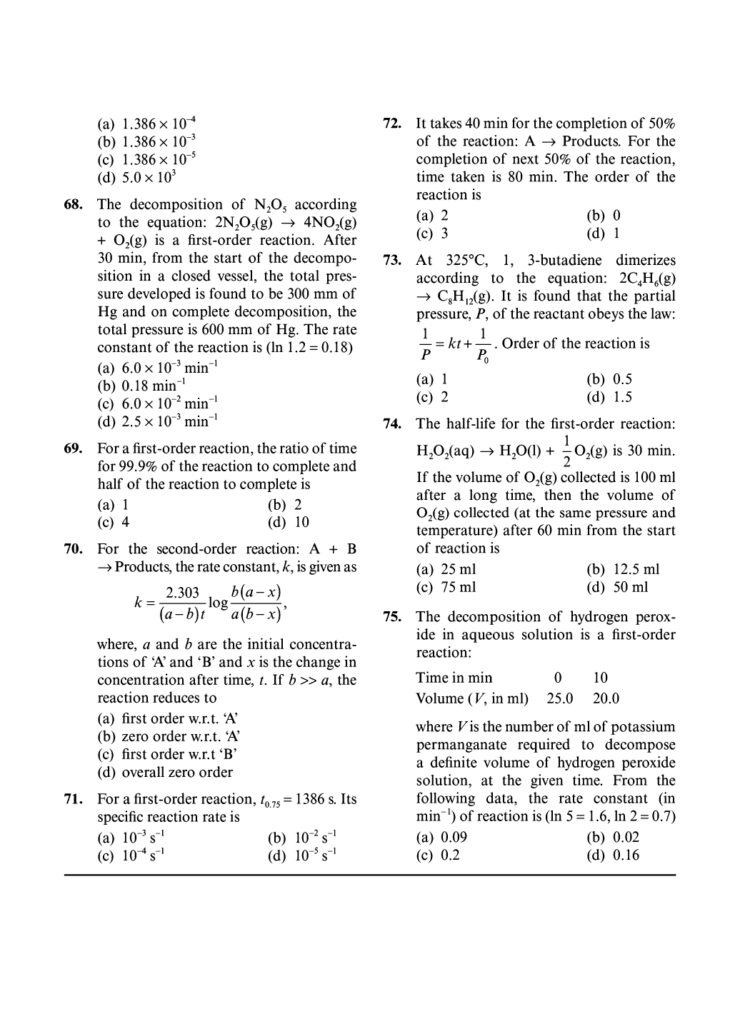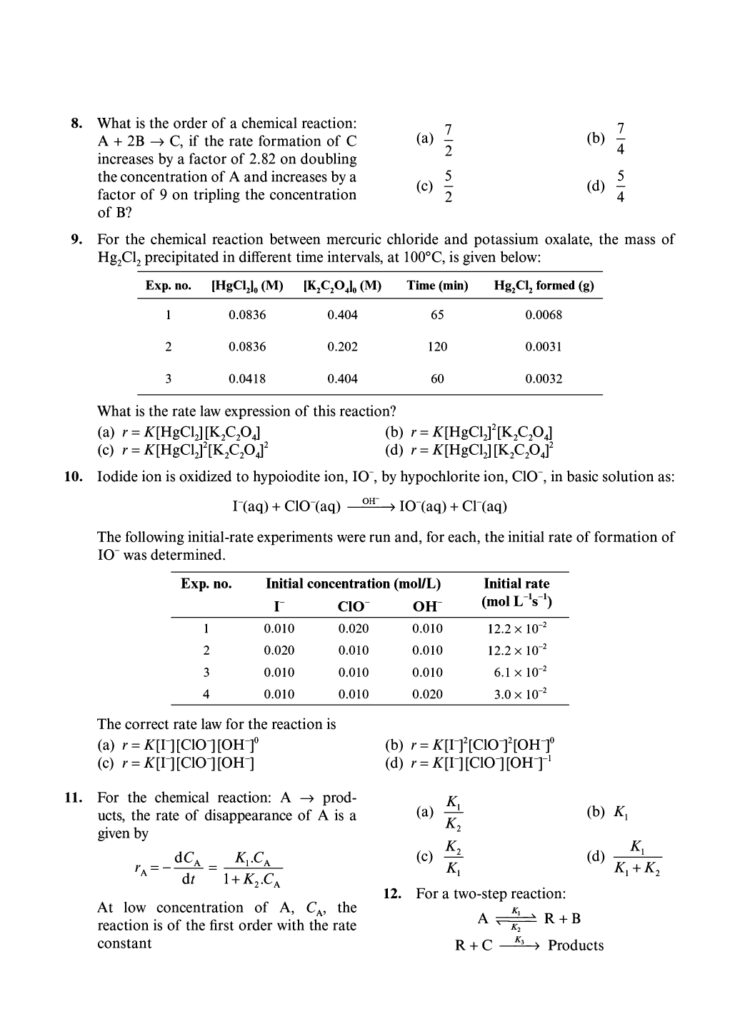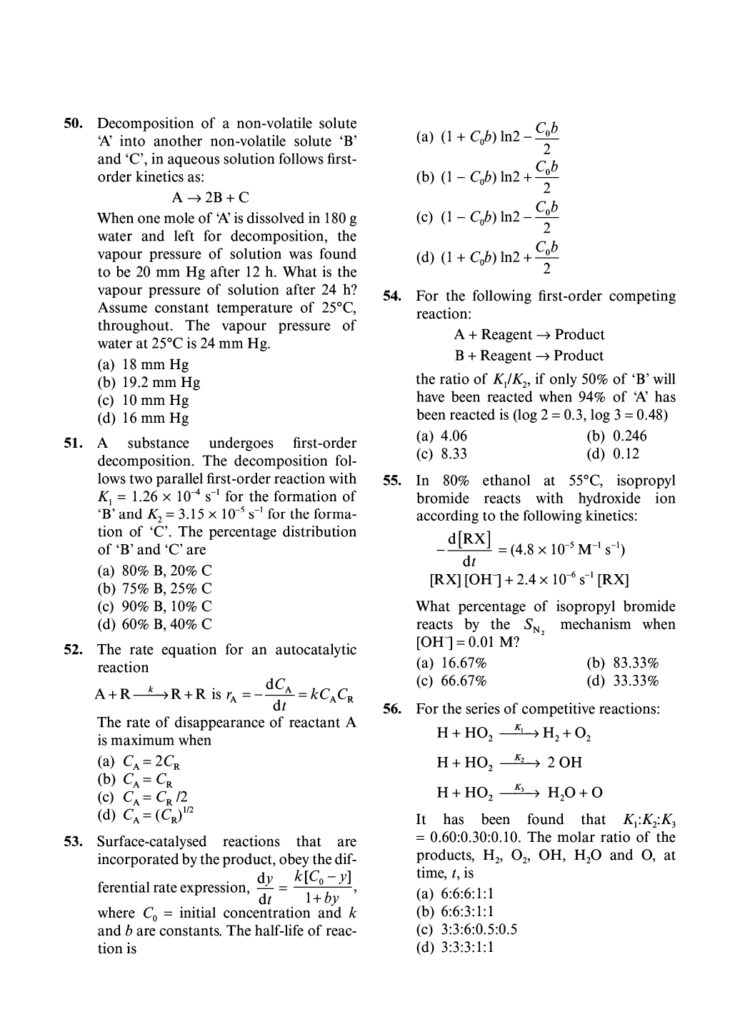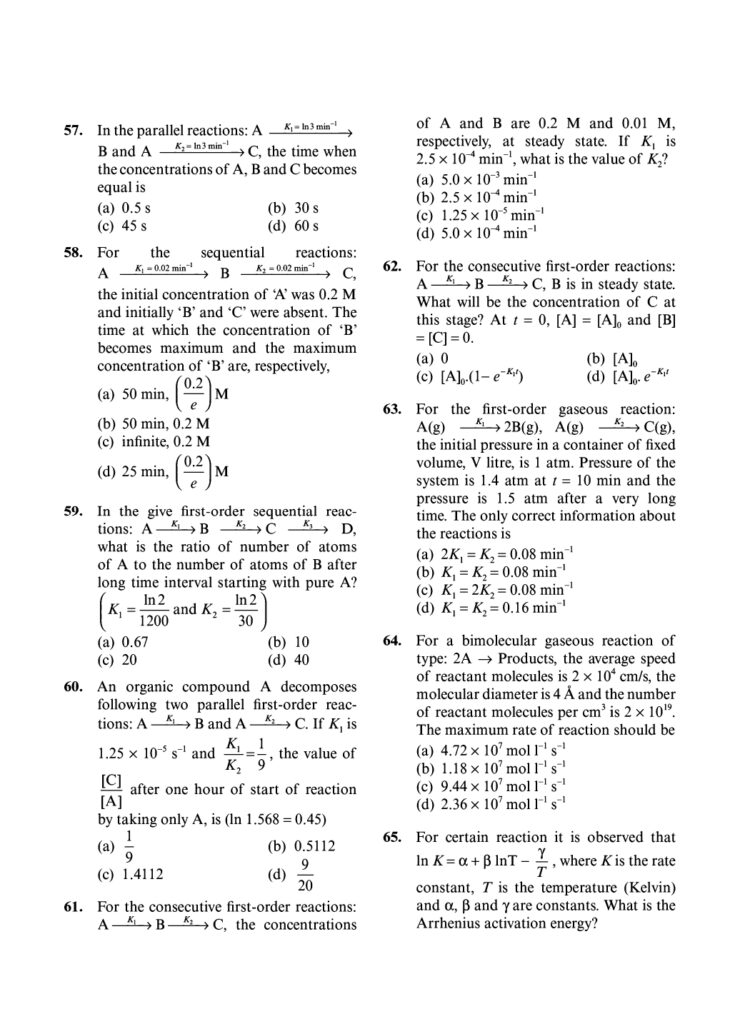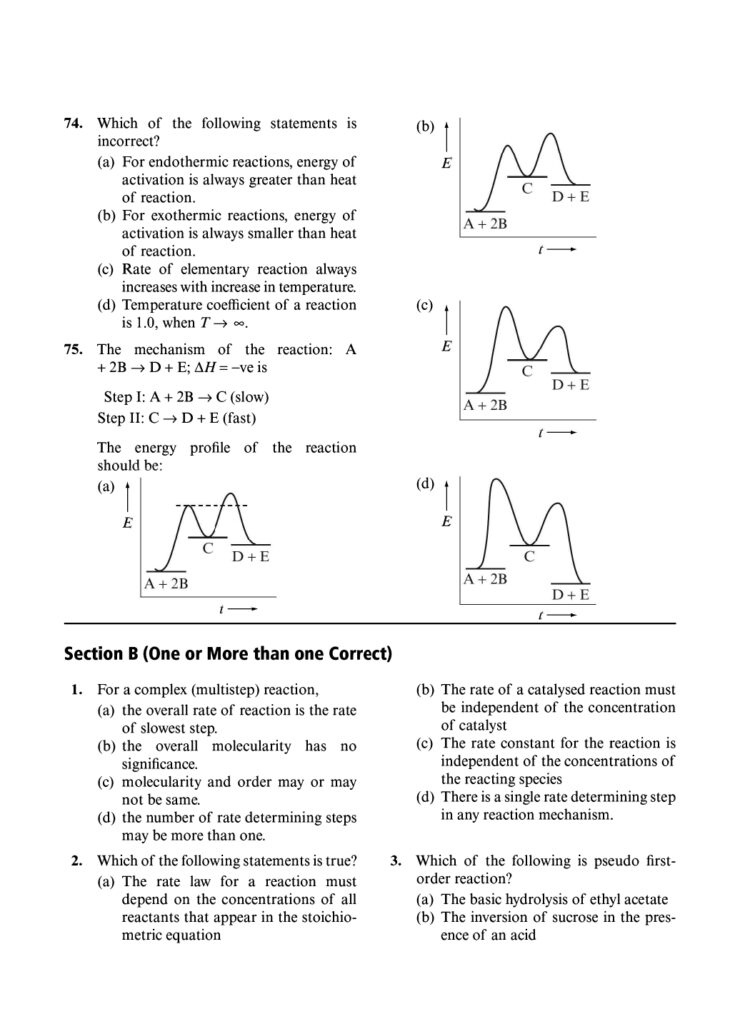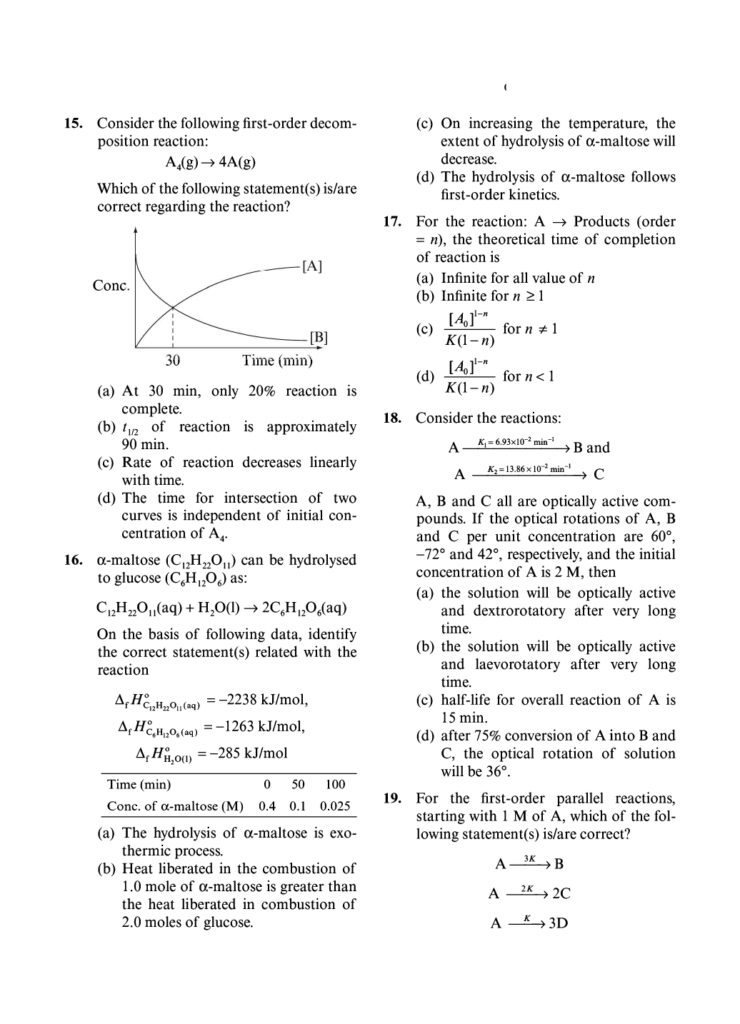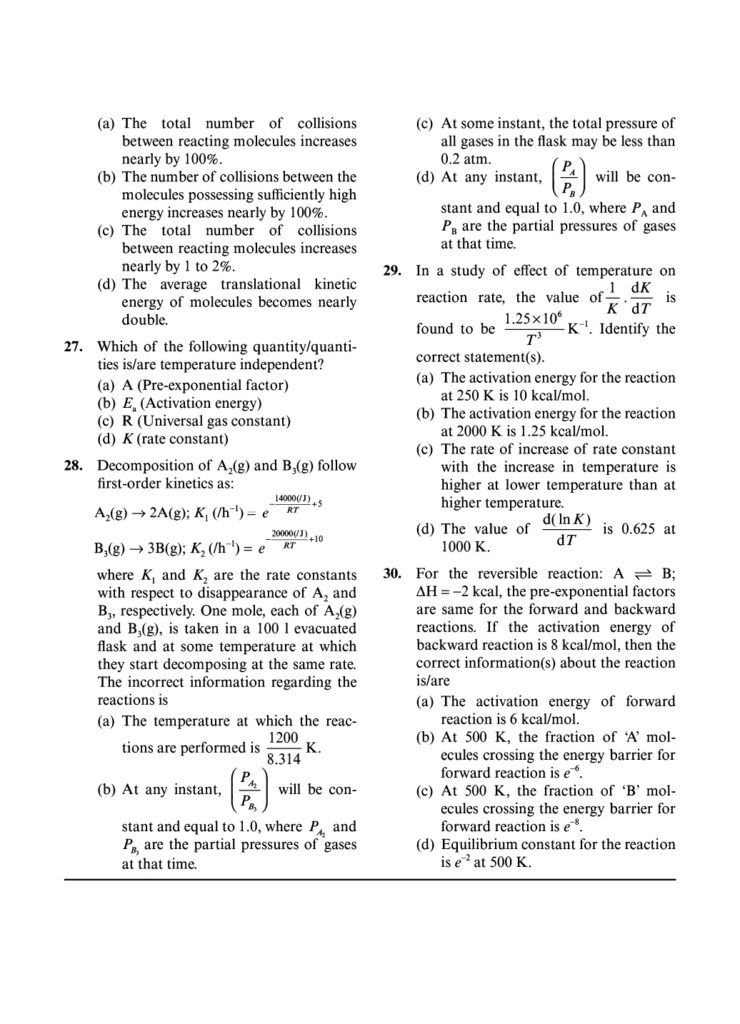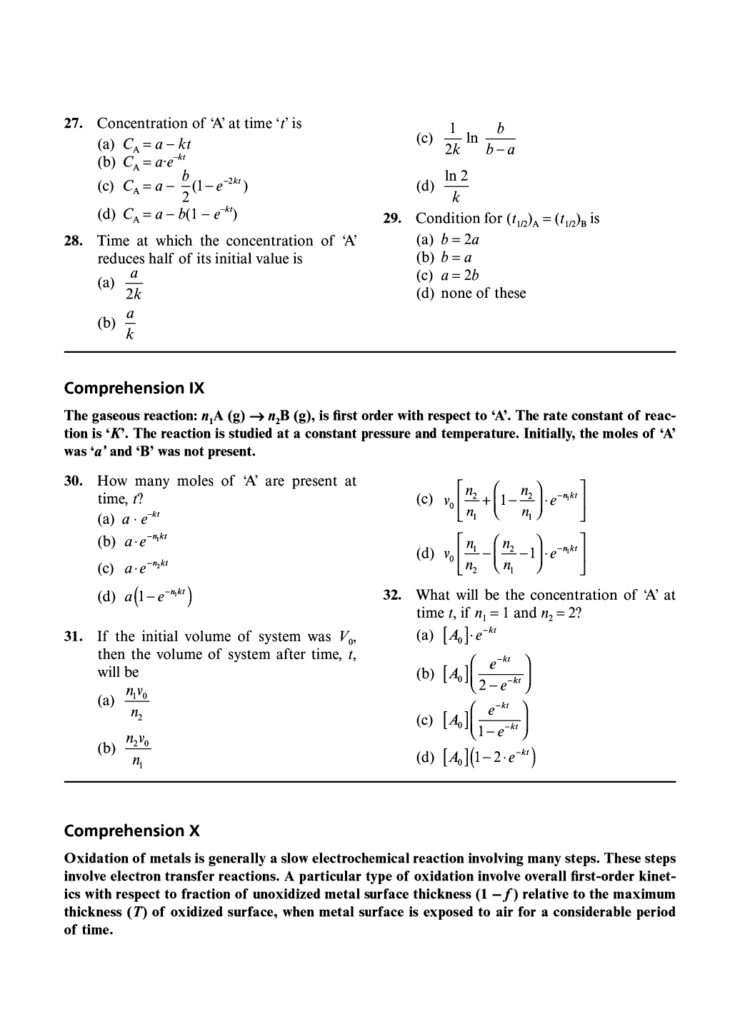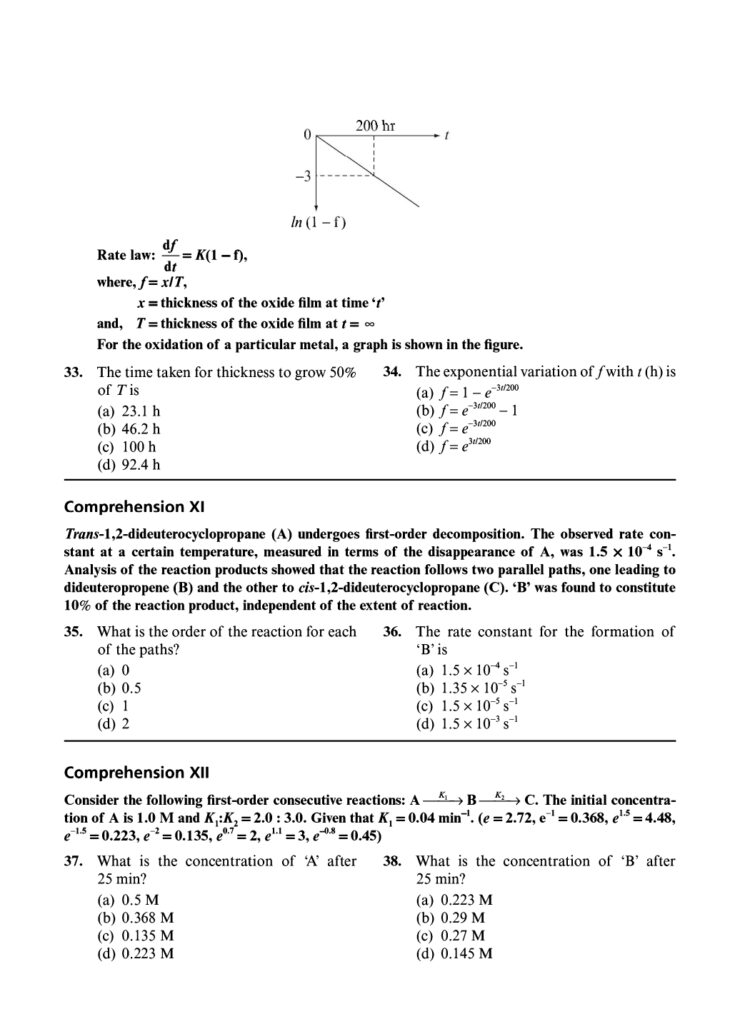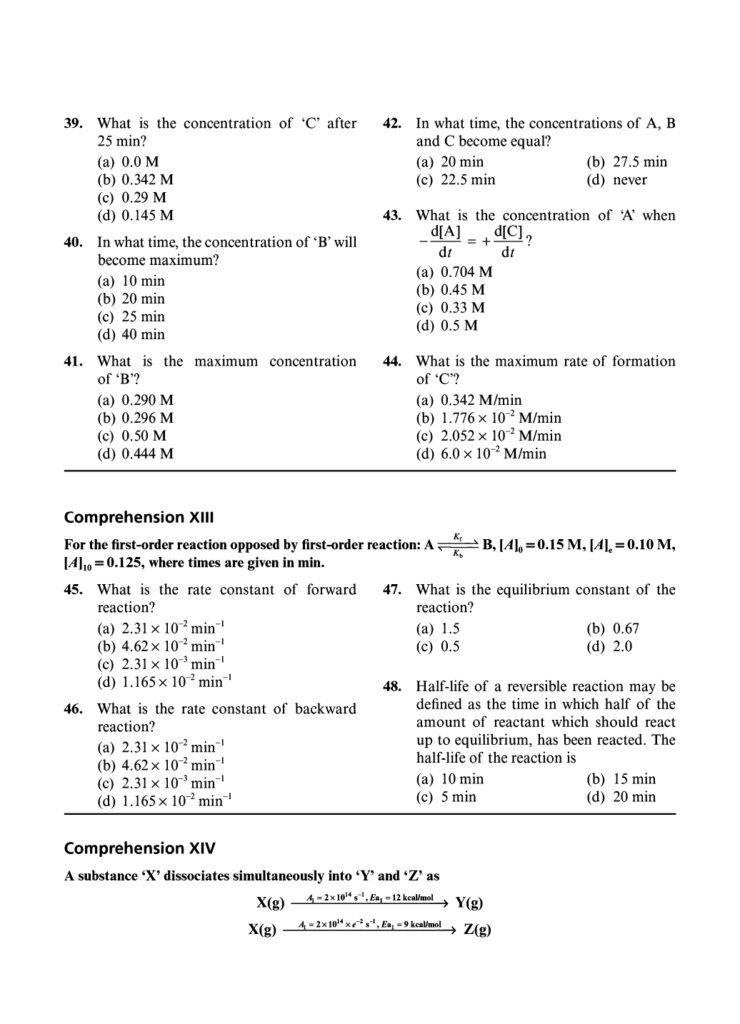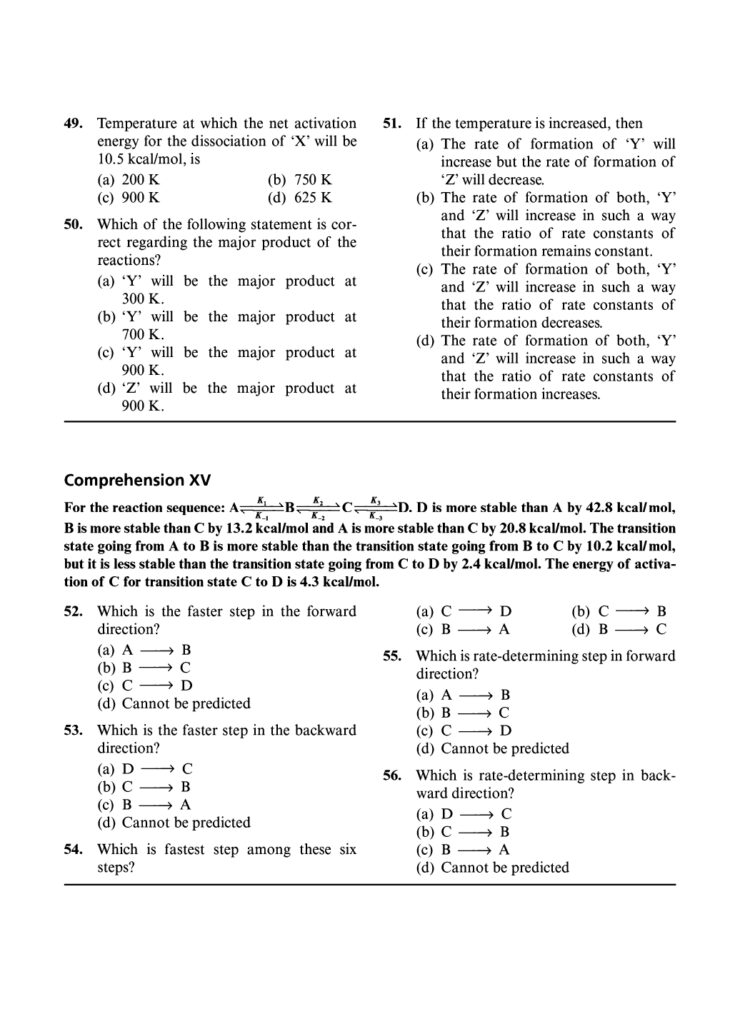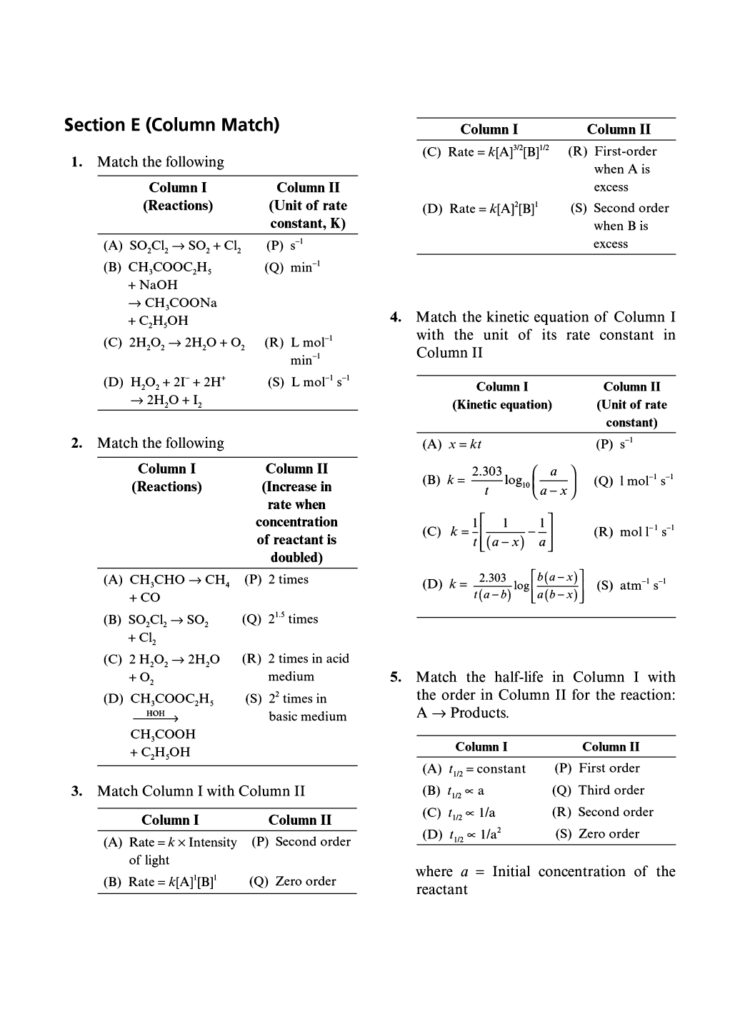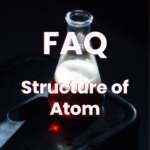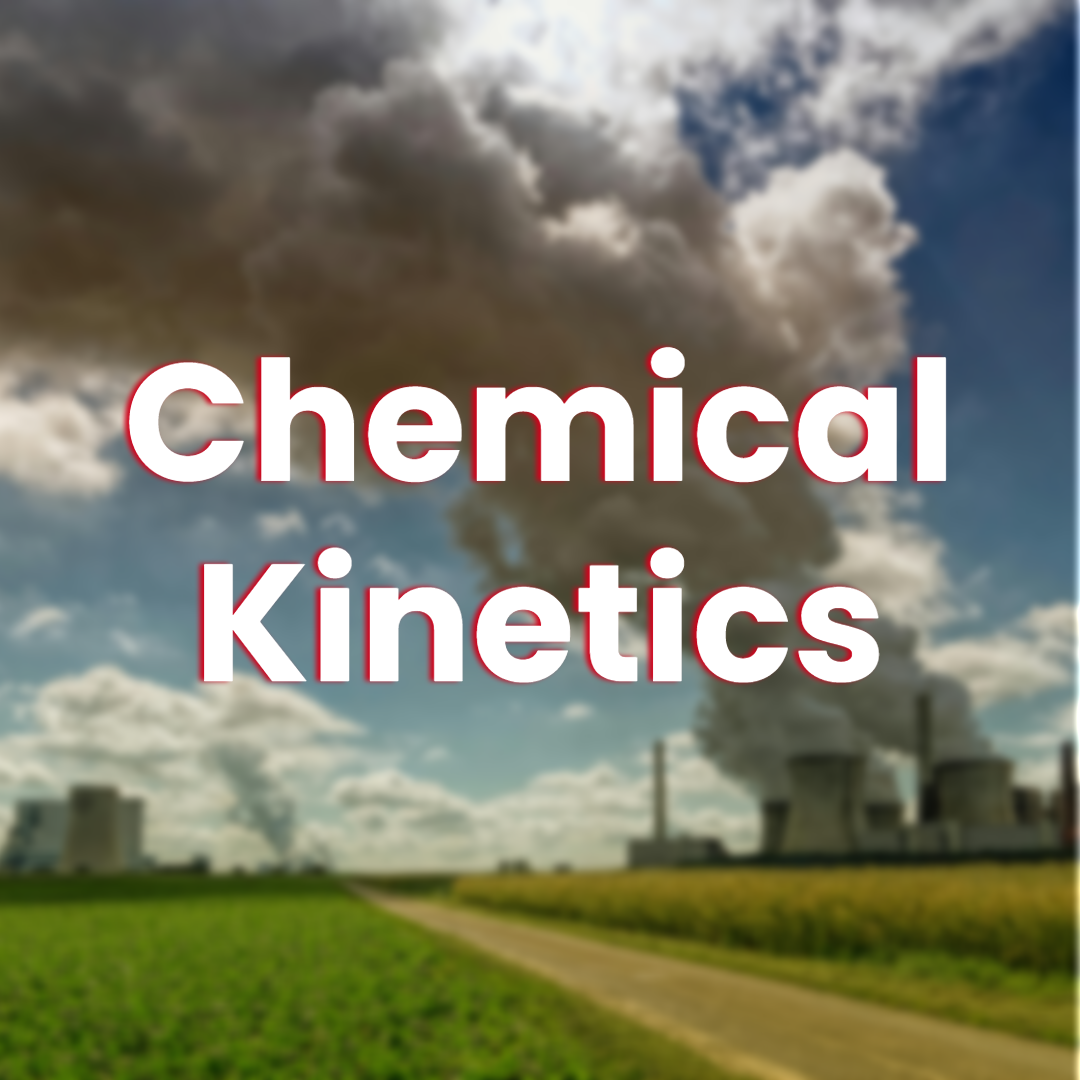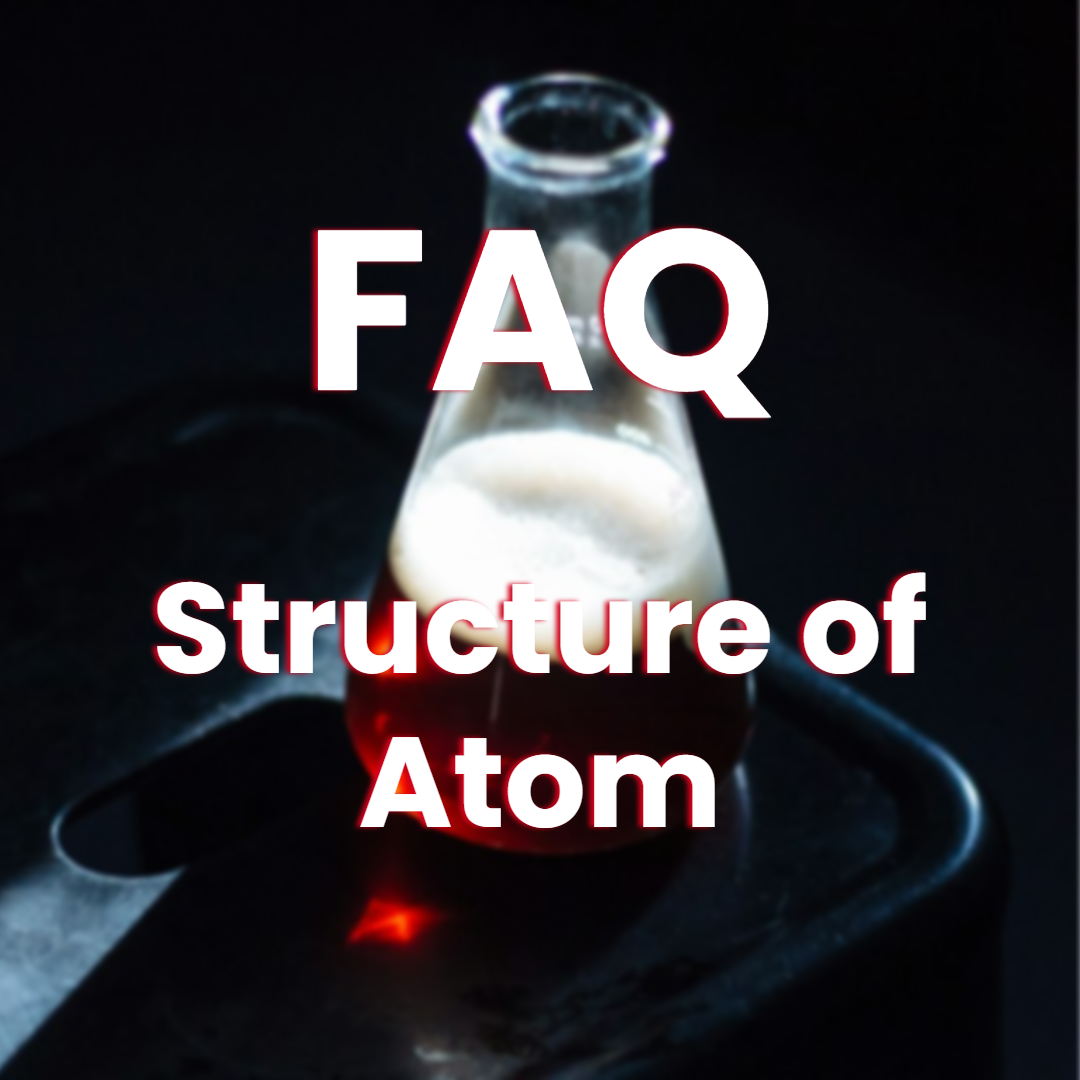Chemical kinetics, a branch of chemistry concerned with the rates of chemical reactions and the factors that influence them, holds significant importance in the JEE (Joint Entrance Examination) Main and Advanced Chemistry syllabi. Understanding the principles of chemical kinetics is essential for predicting reaction rates, elucidating reaction mechanisms, and designing efficient chemical processes. In this blog post, we delve into the chapter on chemical kinetics, exploring key concepts, problem-solving strategies, and practical applications relevant to JEE Main and Advanced Chemistry aspirants.
Fundamental Concepts of Chemical Kinetics:
Chemical kinetics encompasses the study of reaction rates, rate laws, reaction mechanisms, and reaction kinetics. Reaction rate is defined as the change in concentration of reactants or products per unit time, typically expressed in terms of moles per liter per second (mol/L/s). Rate laws describe the mathematical relationship between the rate of a reaction and the concentrations of its reactants, providing insights into the reaction order and rate constant. Reaction mechanisms elucidate the step-by-step pathway by which reactants are transformed into products, involving elementary reactions and reaction intermediates. Keywords: chemical kinetics, reaction rates, rate laws, reaction mechanisms, reaction kinetics, reaction order, rate constant.
Factors Affecting Reaction Rates:
Several factors influence the rates of chemical reactions, including temperature, concentration, pressure, catalysts, and surface area. Temperature plays a critical role in determining reaction rates by affecting the kinetic energy and collision frequency of reactant molecules. Concentration influences reaction rates through the frequency of molecular collisions, with higher concentrations generally leading to faster reaction rates. Pressure affects reaction rates in gas-phase reactions by altering the frequency and energy of molecular collisions. Catalysts are substances that increase reaction rates by providing an alternative reaction pathway with lower activation energy. Surface area influences reaction rates in heterogeneous reactions by exposing more reactant particles to the reaction surface. Keywords: temperature, concentration, pressure, catalysts, surface area, activation energy.
Rate Laws and Rate Determination:
Rate laws express the relationship between the concentrations of reactants and the rate of a chemical reaction, typically determined experimentally through the method of initial rates or graphical analysis. The rate law equation is derived by conducting a series of experiments in which the initial concentrations of reactants are varied while keeping other factors constant. The order of a reaction with respect to a particular reactant is determined by the exponent of its concentration term in the rate law equation. The overall reaction order is the sum of the individual orders with respect to each reactant. Rate constants are experimentally determined constants that characterize the intrinsic rate of a reaction at a given temperature. Keywords: rate laws, rate determination, initial rates method, graphical analysis, reaction order, rate constant.
Problem-Solving Strategies for Chemical Kinetics:
To excel in solving problems related to chemical kinetics in JEE Main and Advanced Chemistry, it is essential to understand the underlying concepts and apply systematic problem-solving strategies. Begin by carefully reading and analyzing the problem statement to identify the given information, unknowns, and relevant concepts. Use the given data and any provided equations or rate laws to set up an appropriate mathematical expression for the problem. Pay attention to units and ensure consistency in units throughout calculations. Solve the mathematical expression for the desired quantity, making sure to consider any additional factors or assumptions necessary for accurate interpretation. Finally, review and verify the solution for correctness and logical consistency. Keywords: problem-solving strategies, systematic approach, mathematical expressions, units, correctness.
Applications and Real-World Relevance:
Chemical kinetics finds wide-ranging applications in various fields, including pharmaceuticals, environmental science, materials science, and industrial chemistry. In pharmaceutical research and development, knowledge of reaction kinetics is crucial for optimizing drug synthesis and formulation processes. In environmental science, chemical kinetics plays a role in understanding atmospheric reactions, pollutant degradation, and ozone depletion. In materials science, kinetics governs processes such as crystallization, phase transformations, and corrosion. In industrial chemistry, kinetics informs reactor design, process optimization, and yield enhancement in chemical manufacturing processes. Keywords: applications, pharmaceuticals, environmental science, materials science, industrial chemistry, reaction optimization, process design.
Conclusion:
In conclusion, the chapter on chemical kinetics in JEE Main and Advanced Chemistry offers a rich tapestry of concepts and problem-solving opportunities that are essential for aspiring scientists and engineers. By mastering the fundamental principles of reaction rates, rate laws, and reaction mechanisms, students can develop a deeper understanding of chemical kinetics and its applications in diverse scientific disciplines. Armed with problem-solving strategies and practical insights, JEE Main and Advanced Chemistry aspirants can tackle challenging questions with confidence and excel in their academic pursuits.







